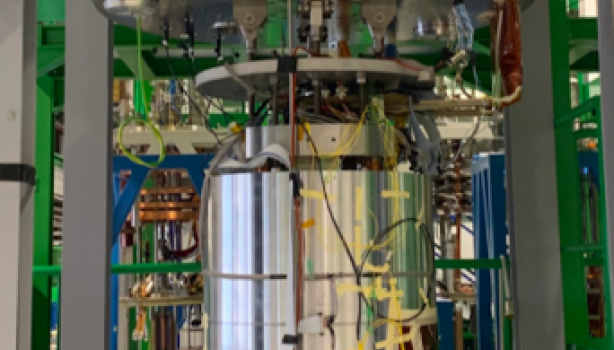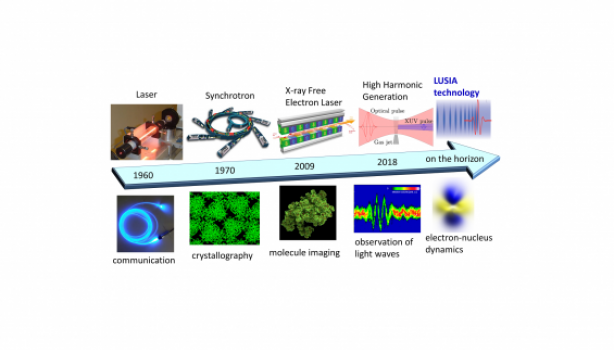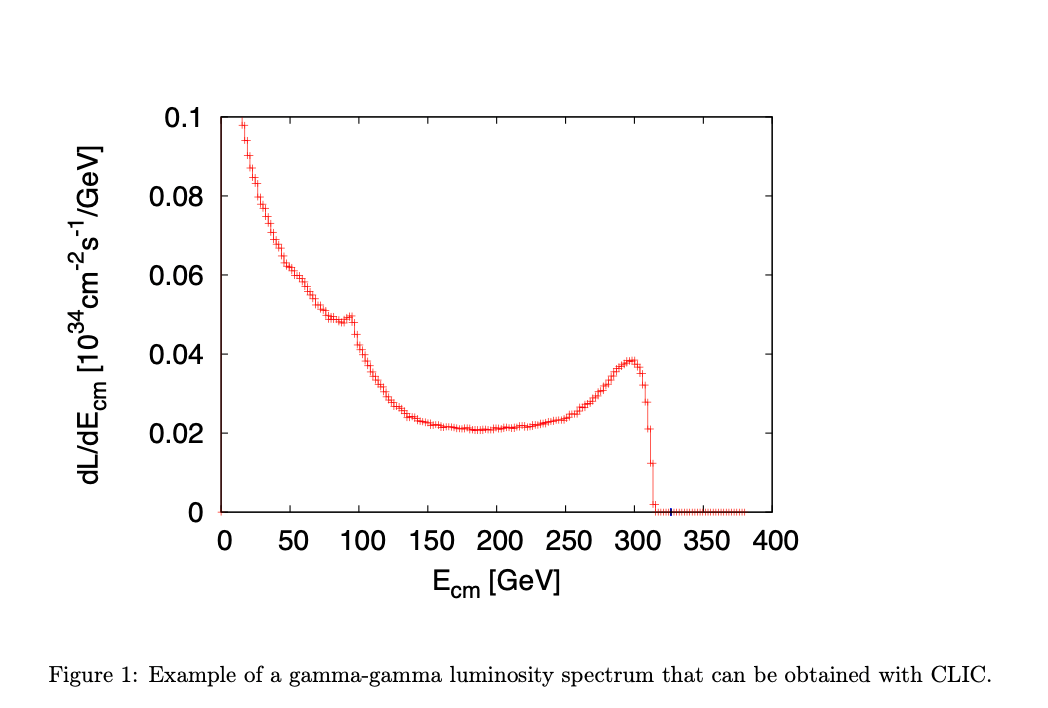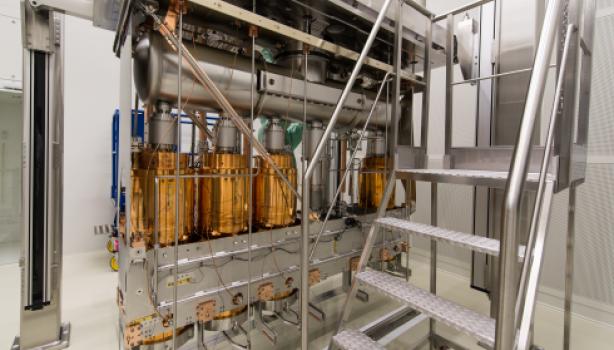The European Particle Physics Strategy Update recommends that Europe should explore the path towards a future high-energy hadron collider, one like the proposed FCC-hh, and ramp up the required R&D activities to ensure the efficient construction and operation of such a machine. FCC-hh could profit from a large circular tunnel and the infrastructure needed for an electron-positron Higgs factory.
The strategy document notes: “Europe, together with its international partners, should investigate the technical and financial feasibility of a future hadron collider at CERN with a centre-of-mass energy of at least 100 TeV and with an electron-positron Higgs and electroweak factory as a possible first stage. Such a feasibility study of the colliders and related infrastructure should be established as a global endeavour and be completed on the timescale of the next Strategy update.”
The following article was first published at home.cern and highlights the main points of the EPPSU, where the requirements for a future hadron collider at CERN are carefully detailed.
Following almost two years of discussion and deliberation, the CERN Council today announced that it has updated the strategy that will guide the future of particle physics in Europe within the global particle-physics landscape. Presented during the open part of the Council’s meeting, held remotely due to the ongoing COVID-19 pandemic, the recommendations highlight the scientific impact of particle physics, as well as its technological, societal and human capital.
By probing ever-higher energy and thus smaller distance scales, particle physics has made discoveries that have transformed the scientific understanding of the world. Nevertheless, many of the mysteries about the universe, such as the nature of dark matter, and the preponderance of matter over antimatter, are still to be explored. The 2020 update of the European Strategy for Particle Physics proposes a vision for both the near- and the long-term future of the field, which maintains Europe's leading role in addressing the outstanding questions in particle physics and in the innovative technologies being developed within the field.
The highest scientific priorities identified in this update are the study of the Higgs boson - a unique particle that raises scientific profound questions about the fundamental laws of nature - and the exploration of the high-energy frontier. These are two crucial and complementary ways to address the open questions in particle physics.
“The Strategy is above all driven by science and thus presents the scientific priorities for the field,” says Ursula Bassler, President of the CERN Council. “The European Strategy Group (ESG) – a special body set up by the Council – successfully led a strategic reflection to which several hundred European physicists contributed.” The scientific vision outlined in the Strategy should serve as a guideline to CERN and facilitate a coherent science policy across Europe.
The successful completion of the High-Luminosity LHC in the coming decade, for which upgrade work is currently in progress at CERN, should remain the focal point of European particle physics. The strategy emphasises the importance of ramping up research and development (R&D) for advanced accelerator, detector and computing technologies, as a necessary prerequisite for all future projects. Delivering the near and long-term future research programme envisaged in this Strategy update requires both focused and transformational R&D, which also has many potential benefits to society.
The document also highlights the need to pursue an electron-positron collider acting as a “Higgs factory” as the highest-priority facility after the Large Hadron Collider (LHC). The Higgs boson was discovered at CERN in 2012 by scientists working on the LHC, and is expected to be a powerful tool to look for physics beyond the Standard Model. Such a machine would produce copious amounts of Higgs bosons in a very clean environment, would make dramatic progress in mapping the diverse interactions of the Higgs boson with other particles and would form an essential part of a rich research programme, allowing measurements of extremely high precision. Operation of this future collider at CERN could begin within a timescale of less than 10 years after the full exploitation of the High-Luminosity LHC, which is expected to complete operations in 2038.
The exploration of significantly higher energies than the LHC will allow new discoveries to be made and the answers to existing mysteries, such as the nature of dark matter, to potentially be found. In acknowledgement of the fact that the particle physics community is ready to prepare for the next step towards even higher energies and smaller scales, another significant recommendation of the Strategy is that Europe, in collaboration with the worldwide community, should undertake a technical and financial feasibility study for a next-generation hadron collider at the highest achievable energy, with an electron-positron collider as a possible first stage.
It is further recommended that Europe continue to support neutrino projects in Japan and the US. Cooperation with neighbouring fields is also important, such as astroparticle and nuclear physics, as well as continued collaboration with non-European countries.
“This is a very ambitious strategy, which outlines a bright future for Europe and for CERN with a prudent, step-wise approach. We will continue to invest in strong cooperative programmes between CERN and other research institutes in CERN’s Member States and beyond,” declares CERN Director-General Fabiola Gianotti. “These collaborations are key to sustained scientific and technological progress and bring many societal benefits.”
“The natural next step is to explore the feasibility of the high-priority recommendations, while continuing to pursue a diverse programme of high-impact projects,” explains ESG chair Halina Abramowicz. “Europe should keep the door open to participating in other headline projects that will serve the field as a whole, such as the proposed International Linear Collider project.”
Beyond the immediate scientific return, major research infrastructures such as CERN have broad societal impact, thanks to their technological, economic and human capital. Advances in accelerators, detectors and computing have a significant impact on areas like medical and biomedical technologies, aerospace applications, cultural heritage, artificial intelligence, energy, big data and robotics. Partnerships with large research infrastructures help drive innovation in industry. In terms of human capital, the training of early-career scientists, engineers, technicians and professionals provides a talent pool for industry and other fields of society.
The Strategy also highlights two other essential aspects: the environment and the importance of Open Science. “The environmental impact of particle physics activities should continue to be carefully studied and minimised. A detailed plan for the minimisation of environmental impact and for the saving and reuse of energy should be part of the approval process for any major project,” says the report. The technologies developed in particle physics to minimise the environmental impact of future facilities may also find more general applications in environmental protection.
The update of the European Strategy for Particle Physics announced today got under way in September 2018, when the CERN Council, comprising representatives from CERN’s Member and Associate Member States, established a European Strategy Group (ESG) to coordinate the process. The ESG worked in close consultation with the scientific community. Nearly two hundred submissions were discussed during an Open Symposium in Granada in May 2019 and distilled into the Physics Briefing Book, a scientific summary of the community’s input, prepared by the Physics Preparatory Group. The ESG converged on the final recommendations during a week-long drafting session held in Germany in January 2020. The group’s findings were presented to the CERN Council in March and were scheduled to be announced on 25 May, in Budapest. This was delayed due to the global Covid-19 situation but they have now been made publicly available.
For more information:
- Read the feature article in the CERN Courier.
- Consult the documents of the Update of the European Strategy for Particle Physics:






